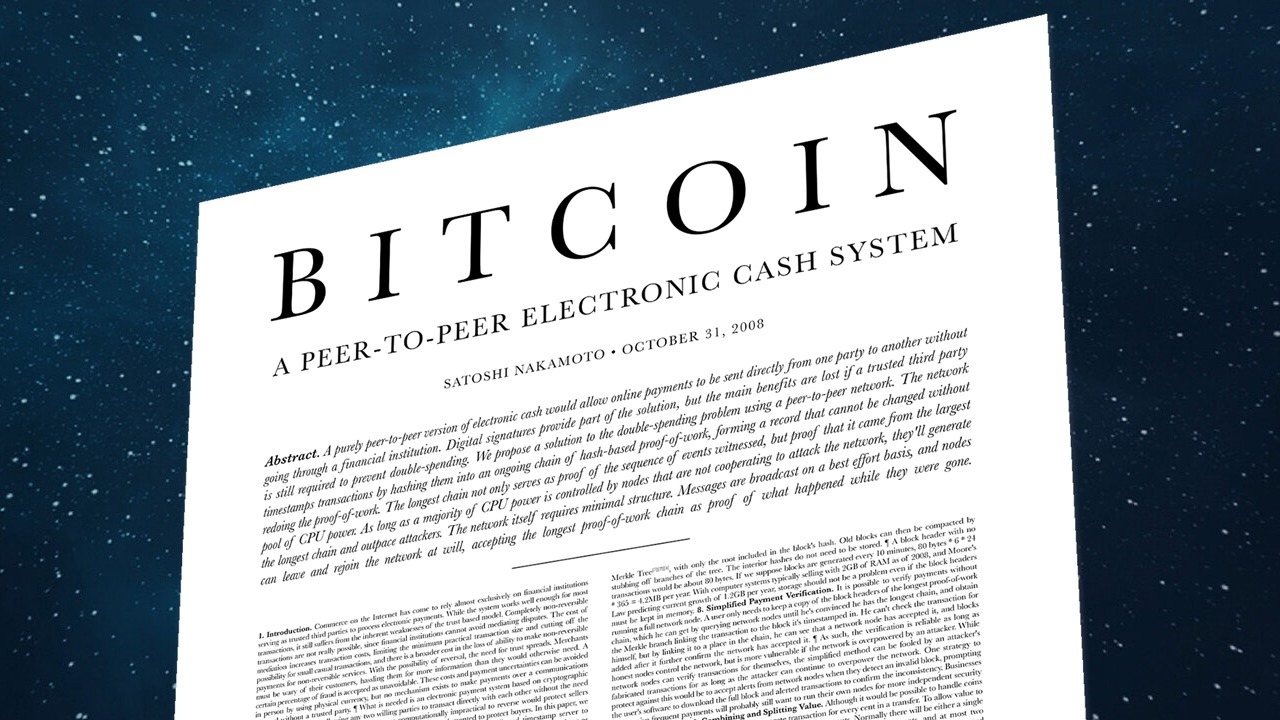On Halloween night in 2008, Satoshi Nakamoto unveiled the Bitcoin white paper, marking a seismic shift in the world of finance and technology.
The Significance of Halloween 2008 in Bitcoin’s Origin Story
In 2008, on Halloween, an anonymous figure known only as Satoshi Nakamoto introduced a groundbreaking concept that would alter the course of financial history. With the release of the “Bitcoin: A Peer-to-Peer Electronic Cash System” white paper, Nakamoto laid out the framework for a decentralized, trustless financial system. Sixteen years later, Bitcoin has cemented itself as a global economic force. But why did Nakamoto choose Oct. 31, 2008, for this landmark publication? Exploring the economic, cultural, and thematic implications of that specific date sheds light on the motivations behind this mysterious choice.

The Cultural Resonance of Halloween
Halloween is traditionally a time for mystery, disguise, and a touch of the macabre, elements that may resonate with Nakamoto’s own concealed identity. Choosing Halloween as the launch date could have been a symbolic choice, tapping into the mystique surrounding anonymity and disguise. With Nakamoto’s identity still unknown, the Halloween release date might reflect the ethos of obscurity and misdirection that has characterized Bitcoin’s enigmatic creator. Releasing the white paper on a day devoted to masks and hidden identities may have been Nakamoto’s nod to the elusive nature of the project’s origins.

Additionally, Halloween has a cultural association with transformation and the breakdown of traditional boundaries. It’s a night when the ordinary world is replaced with something more surreal, a time when people step into new identities. In some sense, Bitcoin itself represents a dramatic shift away from the established structures of traditional finance—a new identity for money. By releasing the white paper on Halloween, Nakamoto may have been signaling Bitcoin as a financial “revolution in disguise,” one that challenges conventional beliefs about money, trust, and governance.
An Era of Economic Upheaval: 2008’s Financial Crisis
The timing of the release was not arbitrary. In 2008, the world was in the throes of a global financial crisis, one of the most severe economic downturns since the Great Depression. In September 2008, the collapse of Lehman Brothers and subsequent bailouts of major financial institutions highlighted the vulnerabilities and perceived failures of the global banking system. These events raised widespread public skepticism toward centralized banking and financial practices. Nakamoto’s choice to introduce Bitcoin during this turbulent period is widely seen as a reaction against these institutions, especially with Bitcoin’s design promoting decentralization and independence from traditional banking structures.

Nakamoto’s own words in the Bitcoin genesis block, which references a headline about bank bailouts, underscores this point. Bitcoin, by design, bypasses banks and creates a trustless, decentralized network, a stark contrast to the centralized financial power structures. It is reasonable to infer that Nakamoto’s motivation in 2008 stemmed from a critique of centralized economic power. The release of the white paper on Halloween that year could be interpreted as a symbol of defiance, portraying Bitcoin as a new entity emerging from the shadows of a broken system.
Thematic Parallels With Cryptography and Secrecy
Halloween’s theme of hidden identities and cryptic symbols mirrors key aspects of cryptography, the foundation of Bitcoin’s security model. Cryptography, often associated with secrets, codes, and hidden information, aligns with Bitcoin’s objective to provide a secure, pseudonymous form of electronic cash. Nakamoto’s communication style—brief, straightforward, and careful—matches the cryptographic ethos of staying within the shadows. By choosing Halloween, Nakamoto could have been highlighting this cryptographic nature, symbolizing Bitcoin as a tool for financial privacy and security, hidden in plain sight from the traditional financial system.

Furthermore, Bitcoin’s structure as a peer-to-peer (P2P) network reduces dependency on trust-based intermediaries by leveraging cryptography, a solution to what is often referred to as the “Byzantine generals’ problem.” Nakamoto’s white paper presents a resolution to this problem, establishing a system where participants can achieve consensus and maintain transaction integrity without a central authority. This approach positioned Bitcoin as both a solution to historical financial limitations and as a radically new form of secure communication—a trait that cryptographic experts and enthusiasts could view as fittingly symbolized by Halloween’s cloak-and-dagger aura.
Halloween as a Reminder of Duality
Halloween often plays on duality—the interplay between life and death, seen and unseen. Bitcoin, in a similar duality, blurs the line between physical and digital assets, offering the functionality of money without the physical form traditionally associated with currency. This could be why Nakamoto chose Halloween as the white paper’s release date, using the holiday’s themes to mirror Bitcoin’s revolutionary duality. Bitcoin operates on dual levels: as a currency, it serves practical financial needs, yet as a technology, it is a conceptual shift toward a more abstract, digital form of value. The Halloween release date may reflect this dual existence, aligning with Bitcoin’s simultaneous roles as both money and a digital asset.
Moreover, the development of Bitcoin was rooted in the early internet’s libertarian ethos and cypherpunk ideals, groups that championed privacy, personal freedom, and autonomy from centralized authorities. Halloween, as a day for the unexpected and the unconventional, aligns with these values, framing Bitcoin as a rebellious entity designed to operate outside traditional norms. Nakamoto’s release of Bitcoin on Halloween might be seen as a statement on the need for freedom in finance—a statement cloaked in the same spirit of unorthodox values.
16 Years Later, Bitcoin Still Haunts Traditional Finance
The Halloween release of the Bitcoin white paper remains one of the most compelling mysteries in the history of finance and technology. While Nakamoto’s motives are unknown, the timing on Halloween night in 2008 was likely deliberate. Whether symbolizing anonymity, critiquing centralized power during an economic crisis, or highlighting the cryptographic foundation of Bitcoin, Nakamoto’s choice of date continues to fascinate and inspire. Sixteen years later, Bitcoin is not just a digital currency but a technological and cultural phenomenon, leaving an indelible mark on the future of finance.
 news.bitcoin.com
news.bitcoin.com
